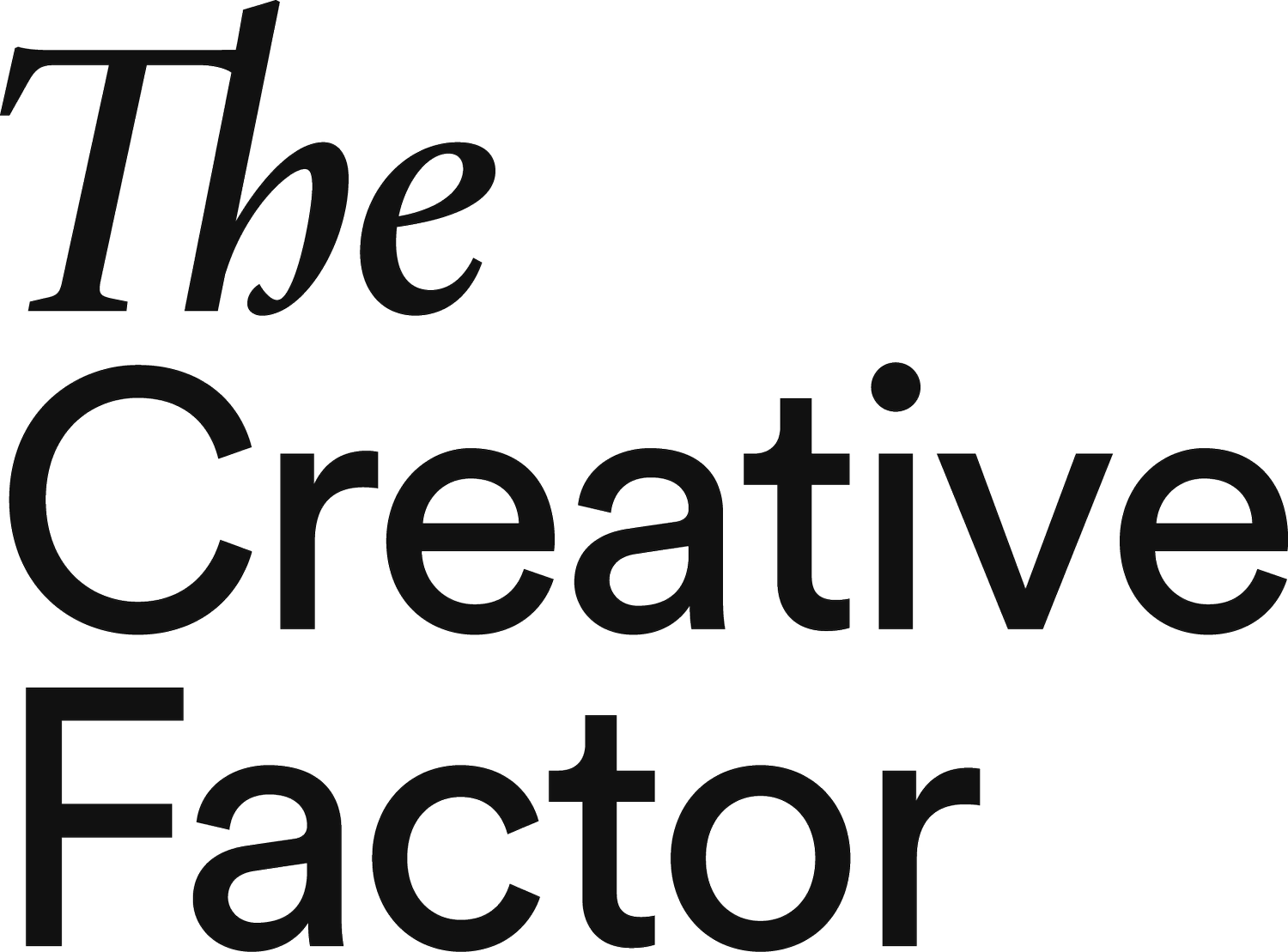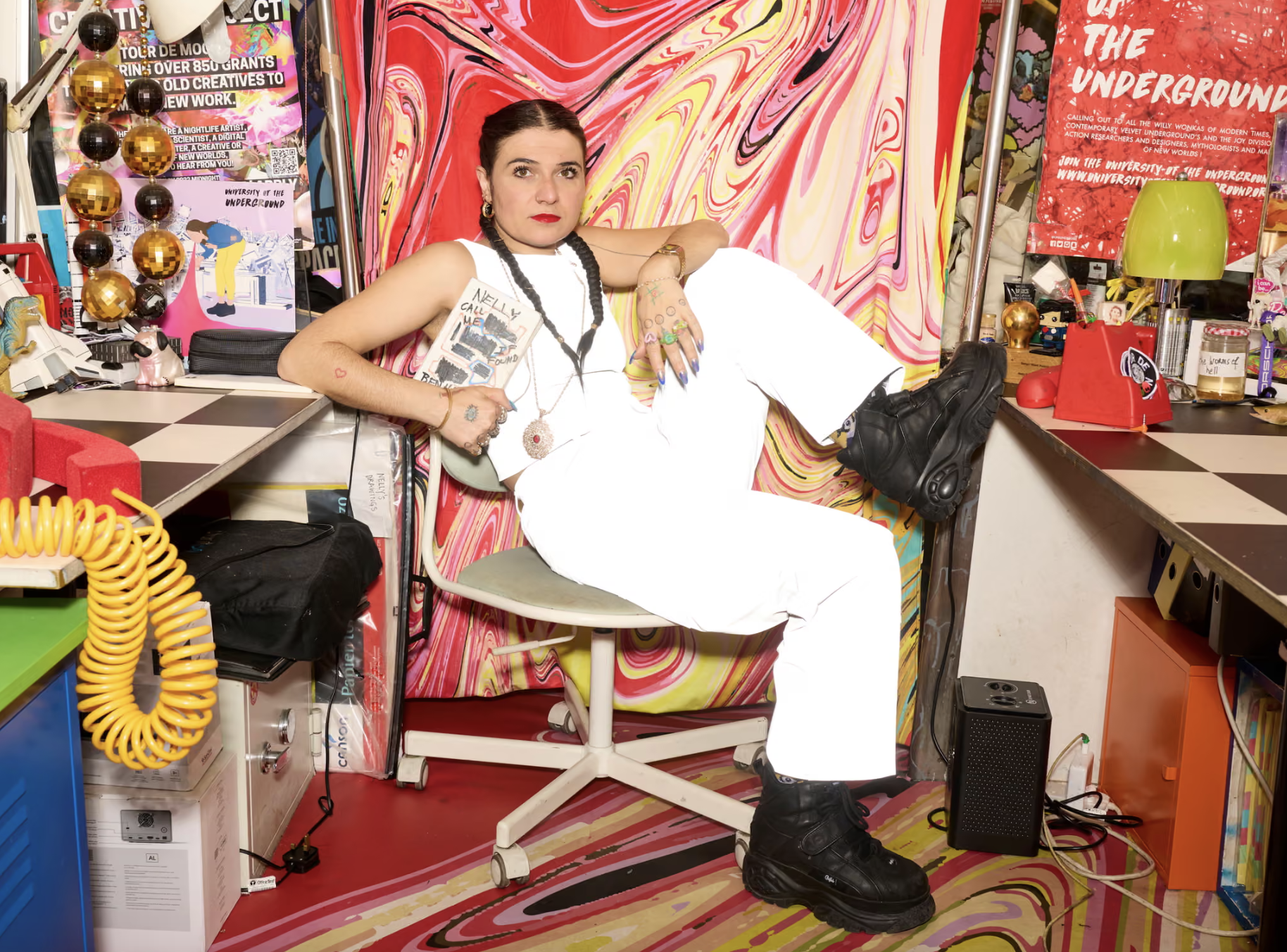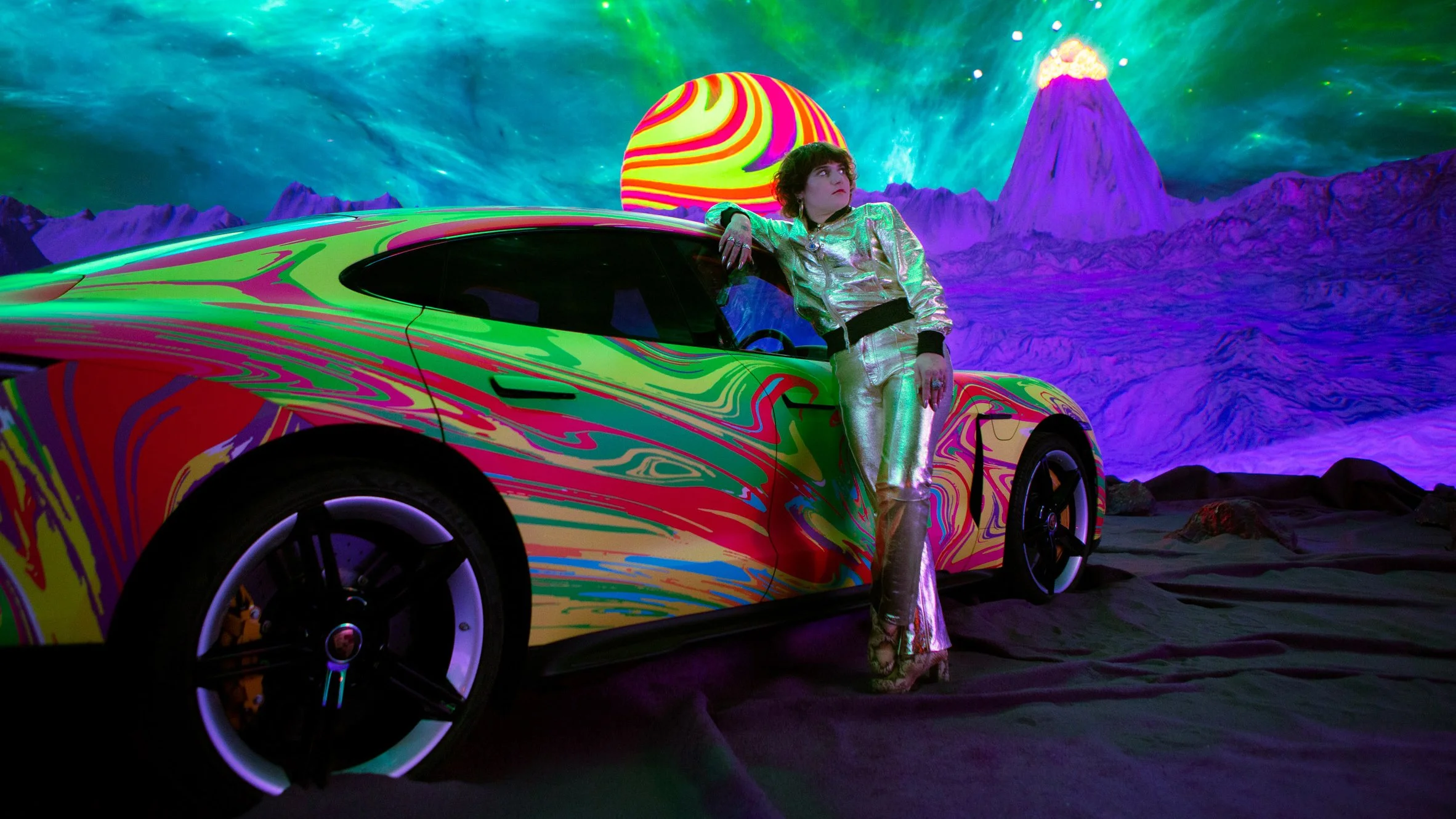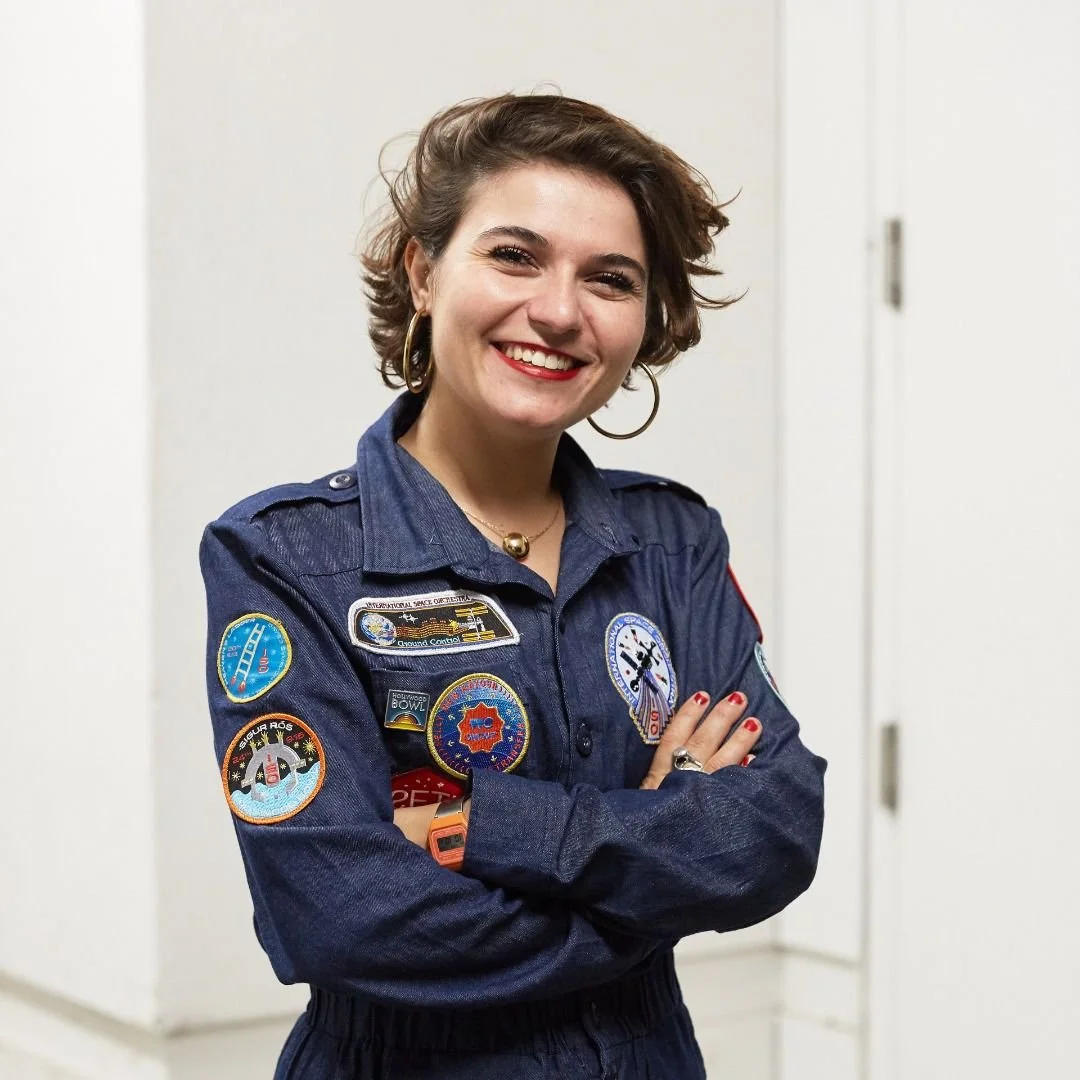Nelly Ben Hayoun-Stépanian: The Willy Wonka of Design and Science
Nelly Ben Hayoun-Stépanian believes in making science more democratic, no matter how extreme the fieldwork. Photo by David Levene.
Nelly Ben Hayoun-Stépanian is maybe one of few people in the world who would willingly trap themselves in a rocket capsule in Kazakhstan for work. Or travel 100 meters below a nuclear power plant in Ukraine. Or, better yet, voluntarily experience a sonic Booum in Japan just to know what it feels like.
Turns out, this is called extreme fieldwork, and it’s not as crazy as it sounds. As an experiential designer, Ben Hayoun-Stépanian makes scientific exploration more accessible and democratic for everyday citizens by recreating experiences for the public that authentically communicate the feeling of the work. Their method involves going in situ to scientific research centers — which entails doing almost anything, clearly.
Their work ranges from bringing music into space with artists like Kid Cudi and Bobby Womack at the International Space Orchestra, to starting a free underground design university in the basement of a European nightclub, to investigating emergency procedures for disasters and turning their findings into film. Did we mention they’ve got one of the most envious side gigs, designing experiments at the Search for Extraterrestrial Intelligence Institute?
When we did this interview, Ben Hayoun-Stépanian called in from a train carriage on top of a nightclub in London. And that was somehow one of the lesser important parts of our conversation. Here, they share the story of how they got into this type of work; what it means to create music that orbits the Earth; and why they believe change cannot happen through a single form.
The artist at work.
You really go the distance in your work — sometimes putting yourself in extreme situations, like locking yourself in a rocket. Why do you do that?
It goes back to an idea from one of my favorite political theorists, Hannah Arendt, who wrote a lot about sinking through action. It makes complete sense with my practice: I don’t believe you can bring something new into the world unless you take down and internalize the path that’s already there. You can’t design meaningful experiences without having lived them, or at least without working with people who have. If I want to give you the experience of a rocket launch, I need to experience it myself, or collaborate with someone who has. So this fieldwork is essential; it helps me understand the context and actors involved, which then shapes a project that feels real and meaningful.
A recent example of this was Shiny Gold, a project we did with Gaîté Lyrique in Paris that explored how different sources of energy, like uranium or your intestine or the sun, are actually all part of one ecosystem. So we literally would use our own intestines to explore what they sound like, and we worked with Marie Curie because they’re a renowned cancer institute using uranium in their research. To really understand something and make it accessible to the public, this type of collaboration is essential.
Tell me about your background. How did you end up doing this type of work?
I started in textile design, then fine art, and even some medicine. Later, I studied Design Interactions at the Royal College of Art, where we explored emerging technologies — nanotech, synthetic biology, AI — long before they were mainstream. We created scenarios to help the public imagine the impact of these technologies. That work, known as critical design, was championed by institutions like MoMA, which gave us early visibility.
Eventually, I did a PhD in political theory to better understand systems, alliances, and how communities organize. My projects range from broadcasting music from the moon to transforming shopping malls into youth centers. I don’t want limitations. I work to support new practices, collaborate with communities, and co-create projects with them.
Today I run a studio dedicated to youth, counterculture, and experimental practices. We focus on how to challenge power structures through design experiences and events. That means I work across many different formats — films, policy, research, even space missions for astronauts. I also run three charities and consult for brands, especially in tech. There isn’t one category that defines what I do. I like working across disciplines because I believe change can’t happen through a single form.
What do you hope to accomplish in your work?
One goal of my studio is to make knowledge accessible in nonlinear ways. Schools often teach compartmentalized knowledge, which is a legacy of the Industrial Revolution, and my work challenges that by connecting science and art with lived experience. I want to give people access to experiences and knowledge they probably would not get otherwise, and present them in nonlinear formats. So my films, for example, play with time, space and perspective, often jumping from activists to scientists and creating portals that expand how you think.
Because I’ve worked in the space industry for 15 years, I also see how science pushes us to think beyond common sense. Space science shows us that the scales we use to understand life are irrational compared to the vastness of the universe. Exposing people to that elasticity of thought is a way of challenging how we repeat history and colonial systems.
Ben Hayoun-Stépanian’s academic background includes training in textile design and a PhD in political theory.
How do you structure your workday?
I feel like I’m in a job interview. This type of question is why I never managed to actually get the job — I’ve never fit into traditional job descriptions because I thrive in chaos, so I’ve always designed my own roles. At WeTransfer, for example, I invented the job of Chief of Experience, thinking about how to grow audiences and create storytelling opportunities.
Usually, I wake up early, go running, and listen to podcasts, often on post-humanism or transfeminism. Then I bike to my studio, which is in a train carriage above a nightclub in London. My day is filled with meetings with curators, commissioners, brand leaders, and all types of different people. I also consult and teach, which helps sustain the studio financially.
In the evenings, I box at a youth center. Boxing inspires how I lead projects: being adaptable, strategic, and resilient. I came out as nonbinary a few years ago, which is also related to my philosophy that nothing is fixed; everything is fluid.
What’s the most challenging aspect of your work?
The chaos. I thrive in it, but it’s also the hardest thing to manage. Projects like To the Moon and Back involved 1,500 young people, and while I had a team, I was still deeply involved at every stage. That means handling many emotions, identities, and expectations at once. It’s a lot of responsibility.
What’s one of your brightest ideas that has yet to see the light of day?
The demilitarization of outer space. This month, we launched the Space Peace Prize, which is rooted in the idea that war on Earth would not be possible if there wasn’t surveillance happening from outer space. If we manage to develop a movement of people and policies around the demilitarization of outer space, then we’re kind of building world peace, in a nutshell.
What’s one thing on your to-do list that keeps you up at night?
It could be something big and philosophical, like world peace. But it could also be as small as finishing my script for a new film called Art Snatcher, which explores queering motherhood.
And, honestly, spending more time with loved ones and grieving. This year has been full of losses for me, including young collaborators and friends. Young death is something I would like to abolish. Everyone deserves to live a long life and have a full experience of it. Taking the time to actually process these things is something I need more time for.
Join more than 50 leaders from top organizations, including Spotify, Amazon, Disney, Shake Shack, Stripe, NASA, Cannondale, Hearst, Roblox, Clay, Paramount, and Mailchimp.




